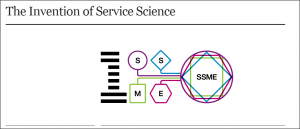At the present time and for the past few months the BBC has been going through a period of difficulty due to the revelations relating to the disgraced former DJ Jimmy Savile. The police, the BBC Governors, BBC managers, social services, social workers and many others are now involved in uncovering the extent of Mr Savile’s activities covering the period from about 1962 to just before he died in 2006.
Listening this morning to a discussion on the case on BBC Radio 4’s Today programme, it struck me that if one was undertaking a DBA at the BBC at the moment (and in the right job with a supportive team and manager), the Jimmy Savile case could be an excellent topic for carrying out an Archival Research project as part of one’s thesis.
There is now a vast amount of published data on the case including official reports, police reports, witness testimony, news reports from the BBC and other sources consisting of printed materials and a vast amount of other media. The Daily Mail1 (February 22nd 2013) reported that “3,000 pages of emails, interviews and submissions released online“.
There would also be the possibility of including Phenomenological Research2. It might be possible to interview existing staff and other relevant people about the case to bring in some personal view points.
The outcome of the thesis would definitely be one or more policy recommendations related to some relevant management theory. It would be interesting to see over time what support the BBC would lend someone carrying out this research as it would likely be deemed to be a risky piece of work. As Stan Lester3 (1999) points out:
“Phenomenological approaches are good at surfacing deep issues and making voices heard. This is not always comfortable for clients or funders, particularly when the research exposes taken for-granted assumptions or challenges a comfortable status-quo.”
Finding a research project with such a high level of richness in one’s own workplace is clearly a challenge. The search is on.
(1) http://www.dailymail.co.uk/news/article-2282667/Jimmy-Savile-scandal-90-pages-BBCs-report-blacked-DG-goes-ground–blamed-fiasco.html
(2) Epistemologically, phenomenological approaches are based in a paradigm of personal knowledge and subjectivity, and emphasise the importance of personal perspective and interpretation. As such they are powerful for understanding subjective experience, gaining insights into people’s motivations and actions, and cutting through the clutter of taken-for-granted assumptions and conventional wisdom. (Lester, 1999).
(3) Lester, S (1999) ‘An introduction to phenomenological research,’ Taunton UK, Stan Lester Developments [Online] (www.sld.demon.co.uk/resmethy.pdf, accessed March 12, 2013).


![[Book] The Research Journey](https://yellowbag.edublogs.org/files/2013/08/Snap-2013-08-27-at-11.22.49-10qioj4-200x300.png)
